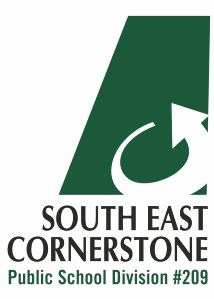The provincial education sector strategic plan (ESSP) is now out there for the educators, administrators and general public to digest fully.
Education Minister Don Morgan in concert with Saskatchewan School Boards Association president Janet Foord of Estevan, who serves on the South East Cornerstone Public School Division board, announced the historic ESSP plan during the SSBA's spring assembly.
The ESSP is the first province-wide plan to be developed in co-operation with all education sector partners, approved by the 28 school boards and accepted by the Government of Saskatchewan.
One controversial item that didn't find its way into the final draft was standardized testing for provincial students.
Cornerstone's director of education Marc Casavant said standardized testing "needs a purpose before it can gain favour. Without it, assessments can be more focused at the classroom levels. I believe the words we heard quite often around the table were something to the effect that standardized testing brought out a toxic culture. But in education, this is a cyclical topic, so it might come back again some day. But it's gone for the time being."
Casavant was one of the province's 28 directors who provided input into the final draft that puts an emphasis on two target areas. The first is reading and comprehension, which will be led by Chinook Public School Division director Liam Choo-Foo who has spear-headed advancements in reading programs in that division over the past few years.
"We can measure results, which we've been doing in Cornerstone for several years now, and now, in collaboration with this sharing among school divisions, we can see where some are doing better than others and why and how they are doing it," said Casavant.
Foord, in a telephone interview shortly after the document was released, said it contains some longer-range plans as well and from a governance standpoint, the SSBA was pleased to see a consolidated plan that was conceived from the grassroots up, rather than using the more traditional top-down model.
"School boards will get to address local priorities, and that means getting back to best practises," Foord added.
The second major prong in the strategic plan is to improve First Nations and Metis learning outcomes.
Casavant said the working groups had less time to work on this particular mandated priority, so it required some fleshing out, but the objective was clear.
"The big part will be First Nations buy-in," he said.
Asked if the current situation of under funding K-12 First Nations education programs by federal sources is worrisome, Casavant said the time for waiting is over.
"If we wait for federal full-impact funds, that could be awhile, and we need to get walking on this now," Casavant added.
"It's the same premise cited for the reading program. If someone can show us how they're getting more First Nations people graduating, then let's get at it."
Going beyond the 2014-15 mandate, Casavant said the directors will begin collaborative meetings again this fall with the expectations of more input from educators, governors, politicians, school community councils and students. They will all get involved again with perhaps the new targets being in improving writing and mathematic skills, although those are not givens.
Morgan said he was excited to have the education ministry moving forward "on a unified approach to education in Saskatchewan. This sector plan is the first of its kind in Saskatchewan. It aligns our province's shared goals while still recognizing local priorities and was designed to put the student first."
The ESSP provides outcome goals for education up to 2020.
"This mandate is a must do, can't fail challenge," said Casavant, who added he was still unsure about some specifics of the overall plan, but the collaborative concept was clear, along with the expected outcomes.
"It's doing things that make sense. We don't need knee-jerk reactions that don't lead us anywhere different. We don't need to be doing things just for the sake of doing them. This plan gives us the right reasons."
Casavant said besides buy-in from First Nations communities, there needed to be reasonable funding expectations from the provincial government to make the mandates work.
"Talks now will circulate around professional development for teachers featuring best practises," he said. "Resources need to be there to support the sector plan. If the government is going to be facing cuts to funding educational funding, we'll have to be realistic about our goals. Money accompanies the resources that support the schools. Funding has to be there to enable success. We brought the elements and challenges to the table as to what needed to be worked on. Now that needs to be supported."
Foord said the final draft of the strategic plan did not result in any surprises or disappointments from her side of the discussions, although the plan took longer than anyone wanted to come to fruition.
"The boards, the people had to make their contributions, then it had to get government approval. We had to wait for all school boards to get it approved within each division and that took almost a year, but now we're there, we get this huge change, and it's exciting to have this co-operative exchange with the Education Ministry as we begin to implement the plan," Foord said.
The ESSP is the action plan that will prioritize and deploy the work the sector needs to do in order to achieve the common goal of supporting students as they reach for their full potential as well as fulfilling targets in the plan for growth in education.
The ESSP can now be used to develop regional plans and priorities as outlined in the document that was released on April 11.




